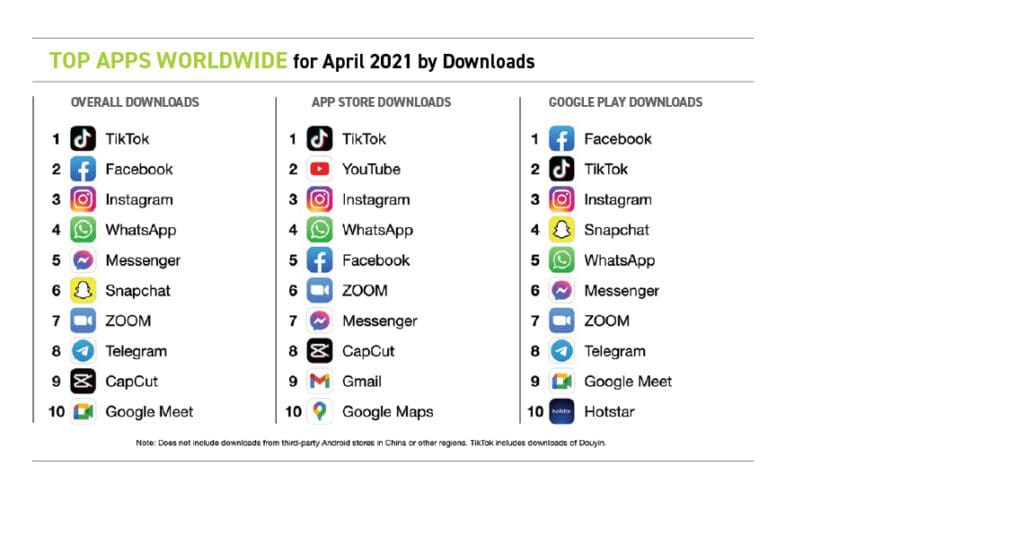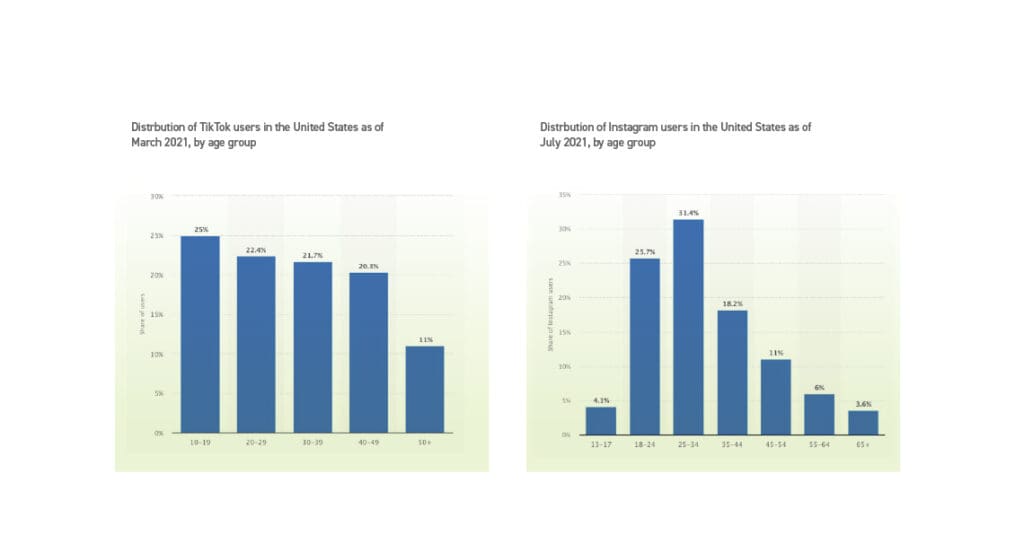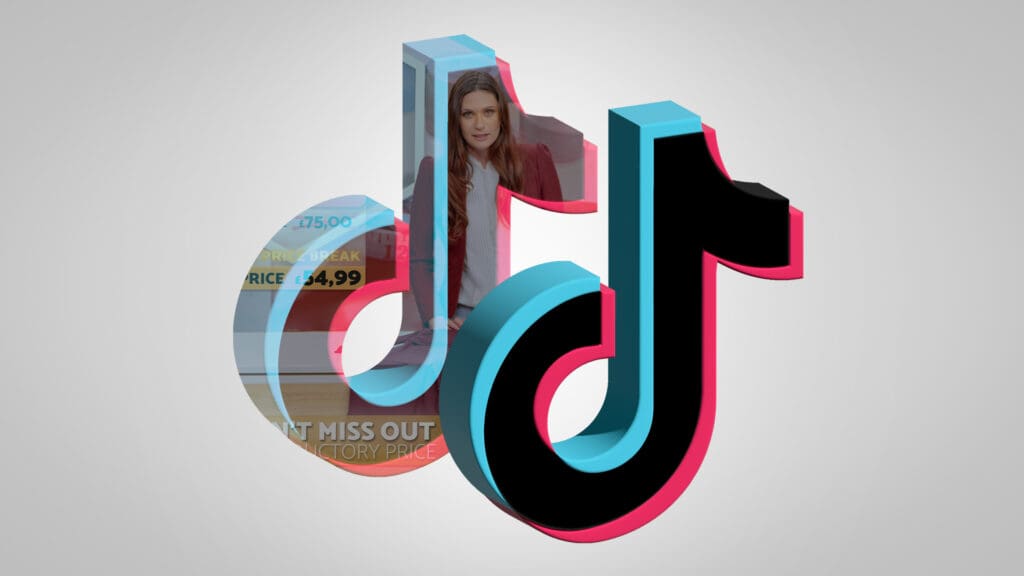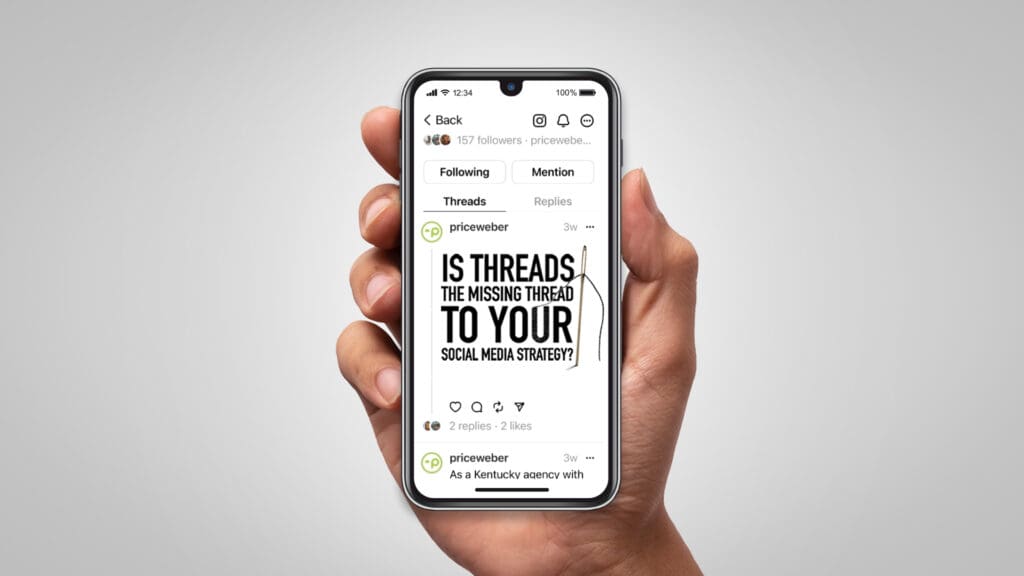
TikTok vs. Instagram: Fishing for Success in Crowded Waters
According to a 2020 study performed by Microsoft, the average adult begins to lose concentration after just eight seconds. In other words, we have a shorter attention span than a goldfish. When considering social media for customer engagement, our short attention span is further complicated by the glut of channel options and the massive amount of content inundating every user. One escalating trend to combat short attention spans is to implement short-form videos in your social media marketing plan.
Now that TikTok has had time to prove that it’s in the game to stay, other social media channels are ready to compete in short-form video content—especially Instagram. In August 2020, the Facebook-owned social media app rolled out a new feature—Instagram Reels. Similar to TikTok, Instagram users can now create short-form, vertical videos to share on the platform. TikTok is starting to feel the heat. But are Instagram’s efforts enough to deter users away from TikTok?
In today’s Plain Talk article, join us as we explore TikTok vs. Instagram. We’ll start reeling in how these two channels differ and how best to keep your head above water.
- TikTok vs. Instagram: Who’s the Catch of the Day?
- Target Audiences: Who Are You Baiting?
- Platform Similarities: Chumming the Waters
- Longer Video Function: The Hook
- A Precise Algorithm: The Line and Sinker
- Inside the Fishbowl With an Influencer’s Perspective
- Cast Your Net With the Right Social Media Mix
- Get Expert Help Understanding the Pros and Cons of TikTok vs. Instagram
TikTok vs. Instagram: Who’s the Catch of the Day?
Looking back at April 2019’s most-downloaded apps worldwide, TikTok ranked number one on Apple’s App Store and ranked second place on Google Play. Instagram ranked third on the App Store and fifth on Google Play, as reported by Sensor Tower. Fast-forward two years later to April 2021. TikTok’s rankings remained the same on both mobile application stores, but Instagram crept further up the list. Although Instagram held its spot as the third most downloaded app from Apple’s App Store, it rose from fifth to third place on the largest app store on the web: Google Play. So, even though TikTok’s position on the charts hasn’t changed in two years, Instagram is on the rise. You can bet TikTok is taking notice, just as Instagram is paying close attention to TikTok fans and how to reel them in.

While TikTok started as a Generation Z-dominated platform, it has begun to diversify to other age groups. However, Gen Z still reigns supreme. Twenty-five percent of TikTok users in the United States are 10-19 years old, 22.4% are ages 20-29, 21.7% are ages 30-39, and 20.3% of users are 40-49 years old, according to a March 2021 Sensor Tower report. When comparing these figures to October 2019, those between 18-24 years old accounted for 42% of U.S. TikTok users, and 27% were between the ages of 13-17. It’s clear to see that these numbers have spread out over time. Those outside of Gen Z taking notice of the platform.

On the other hand, Instagram continues to dominate the millennial generation. Instagram’s reach is less spread out than TikTok and skews older in age, with 31.4% of U.S. Instagram users between 25-34 years old and 25.7% between 18-24 years old, according to a July 2021 Sensor Tower report.
Platform Similarities and Differences: Chumming the Waters
So, you understand the difference in followers, but what about the overall platforms? On the surface, Instagram Reels and TikTok share a lot of similarities including:
- Format: Both platforms offer short-form, vertical video content that users can scroll through to watch the next video.
- Music library: Although both platforms offer a music library to add to the videos, TikTok’s library is much larger than Instagram’s stock.
- Augmented reality effects and filters: While both platforms offer filters and effects, TikTok offers more. Plus, TikTok’s effects have created viral trends.
- Engagement: Both platforms allow users to like, comment, and share the content. However, when exporting a video from TikTok, the video has the TikTok watermark stamped on it, and the audio/music is saved as well. On Instagram, the audio doesn’t save, and there is no watermark. This makes it easier for users to upload their TikTok videos to Instagram Reels than vice-versa. When users upload their TikTok content straight to Reels, you’re still able to see the TikTok watermark and their profile name. We have to give points to TikTok for that.
- Other: Both platforms allow creators to use timers to film videos, change the speed of the videos, and edit different clips together. Not too long after TikTok introduced the “stitch” feature where users can duet a video with another user, Reels unleashed the “remix” feature, which is basically the same thing.
Longer Video Function: The Hook
Originally, when ByteDance merged with Musical.ly in 2016 to create TikTok, users could only create 15 to 30-second videos. When Instagram launched Reels, it also had a 15 to 30-second video limit. TikTok later permitted 60-second videos and, most recently, 3-minute videos. These also incorporate a “skimming” function in an effort to compete with Reels. However, Instagram Reels stepped up the game and recently announced that users can create up to 60-second videos. But, TikTok still wins on the longest-video function. It allows those with short attention spans to skim through the videos quickly.
While TikTok seems to skew more user-friendly, Reels does have one advantage with how the video is displayed—it inhabits a platform we’ve been using for more than 10 years. Your followers can see your Reels content show up on your Instagram profile feed and timeline. On the flip side, people who do not follow you will only see your content on their “Reels” tab on Instagram. The “Reels” tab displays popular videos, but the content may not cater specifically to you as TikTok’s “For You” page (FYP) does.
A Precise Algorithm: The Line and Sinker
TikTok continues to lure users in with its precise algorithm. TikTok’s algorithm allows users to see videos that are specifically targeted to them, based on their engagements (videos they like, share and comment on), device settings (origin country and language preference) and video information (captions, hashtags and sounds they search for). This allows TikTok users to see different types of creators – from viral creators to people with little-to-no followers. This algorithm is set up to encourage people to go viral pretty easily. Plus, it aims to capture the very specific targeted audience that you’re trying to reach without having to pay for targeting like other social media platforms.
While both Instagram Reels and TikTok’s format may be similar, the organization is different. TikTok’s primary feed is the “For You” page. Its secondary feed is the “Following” feed—the accounts that you follow on TikTok. Although Instagram only has one specific feed for Reels that shows new content from creators that you may not follow, the regular feed of photo and video content from your followers still exists. You can also find the Reels that the users you follow create and publish by scrolling through your main Instagram feed.
Inside the Fishbowl With an Influencer’s Perspective
When it comes to social media, influencers have the power to make or break a new platform. So, we can’t skip by without gaining their perspective on the subject and how it affects their strategies. Louisville, Kentucky influencer Haleigh Booth boasts more than 112,000 followers on Instagram, more than 571,100 followers on TikTok, and 11.5 million likes. Her helpful advice on the platforms as a real estate agent and relatable content as a mother with two little ones has resulted in her becoming a viral sensation. As an influencer who got her start on TikTok, she’s now branching out to Reels to keep her audience engaged and expand her following.
“I personally love both platforms, but because I started on TikTok, I find it easier and more user-friendly,” said Booth. “I like that there seems to be more sound options on TikTok and the videos can be longer. Right now, Reels only lets you do 60-second videos where TikTok has now expanded all the way to three-minute videos. I also find it easier to edit in TikTok than Reels. Plus, my reach is better on TikTok. For a while, my reach was great on Instagram, but I feel like my profile gets shadow banned a lot or not shown. It’s just more consistent on TikTok. I think eventually Reels will catch up, but for now, I prefer TikTok when creating content.”
Social media influencer Haleigh Booth
Cast Your Net With the Right Social Media Mix
This isn’t the first time we’ve seen Instagram try to keep up. After witnessing the success of Snapchat, Instagram implemented Stories, augmented reality filters, and other tactics to compete, and ultimately won the battle. After the introduction of Instagram Stories, Snapchat saw its first decline ever.
When it comes to adding a new platform to your social media strategy, you have to have a plan in place. Is TikTok right for you, or are you more apt to add a few Reels videos into your social mix? If you already have an Instagram account for your brand, we recommend dipping your toe into the water and giving Reels a try. Plus, there’s also additional types of content you can post on Instagram, including Instagram TV, feed photos, Stories and feed videos. If you think you are ready for a TikTok page and find that it is on brand for your company, just remember that it will require creativity, an overall strategy for content, and goals to back it up. But when done well, you’ll see great results for your company.
Get Expert Help Understanding the Pros and Cons of TikTok vs. Instagram
If you have any questions about implementing TikTok or Instagram Reels into your social media strategy (or just need help coming up with fishing analogies) our team of social media experts can help. For more information, give us a call at 502-499-4209 or contact us online today.
Our Articles Delivered
Signup to receive our latest articles right in your inbox.




